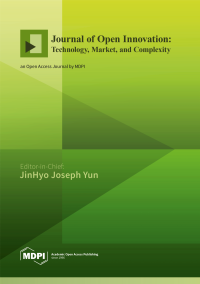Technology Driven Innovation, Research Management and Policy Making
A special issue of Journal of Open Innovation: Technology, Market, and Complexity (ISSN 2199-8531).
Deadline for manuscript submissions: closed (30 November 2020) | Viewed by 87224
Special Issue Editors
Interests: cognitive computing; artificial intelligence; data science; bioinformatics; innovation; big data research; data mining; emerging technologies; information systems; technology driven innovation; knowledge management; semantic web
2. Effat College of Business, Effat University, Jeddah, Saudi Arabia
Interests: smart cities; migration; innovation networks; international business; political economy; economic integration; politics; EU; Central Europe; China
Special Issue Information
Dear Colleagues,
The postindustrial era is characterized by a continuous quest for innovation. The evolution in ICTs and the latest developments in policy making recognize innovation as a complex construct where advanced management, sophisticated ICTs and sustainable policy making, are converging in order to justify a unique value proposition.
The purpose of this Special Issue is to disseminate recent and sound recent on technology driven innovation. In the focus of the Special Issue is on the emerging technologies and applications of our times, including:
- Social networking technologies
- Cloud computing
- Internet of things
- Virtual reality
- Artificial intelligence
- Machine learning
- Big data and analytics
- 3D printing
- Unmanned vehicles and drones
- Sensors and 5G networks
- Medical informatics
- Smart cities technologies
- Location-aware services
The relevant discussion is organized under a critical policy making lenses, favoring topics related to:
- International innovation networks
- International technology transfer
- Research and development policies (at academia, industry, and business)
- Regional studies on innovation policy design and implementation
- Innovation as a social process
- Innovation as enabler of sustainable social inclusive economic growth
- Innovation management in innovation and research centers
- Policies for sustainable impact of research and innovation
- Cases studies of R&D projects
- Critical technologies management
Prof. Dr. Miltiadis D. Lytras
Prof. Dr. Anna Visvizi
Guest Editors
Manuscript Submission Information
Manuscripts should be submitted online at www.mdpi.com by registering and logging in to this website. Once you are registered, click here to go to the submission form. Manuscripts can be submitted until the deadline. All submissions that pass pre-check are peer-reviewed. Accepted papers will be published continuously in the journal (as soon as accepted) and will be listed together on the special issue website. Research articles, review articles as well as short communications are invited. For planned papers, a title and short abstract (about 100 words) can be sent to the Editorial Office for announcement on this website.
Submitted manuscripts should not have been published previously, nor be under consideration for publication elsewhere (except conference proceedings papers). All manuscripts are thoroughly refereed through a single-blind peer-review process. A guide for authors and other relevant information for submission of manuscripts is available on the Instructions for Authors page. Journal of Open Innovation: Technology, Market, and Complexity is an international peer-reviewed open access quarterly journal published by MDPI.
Please visit the Instructions for Authors page before submitting a manuscript. The Article Processing Charge (APC) for publication in this open access journal is 800 CHF (Swiss Francs). Submitted papers should be well formatted and use good English. Authors may use MDPI's English editing service prior to publication or during author revisions.
Keywords
- Innovation
- Innovation management
- Emerging technologies
- International technology transfer
- Innovation networks
- Research
- research management
- Critical technologies
- Smart cities
- Innovation clusters
- Smart education
- Social inclusive economic growth





